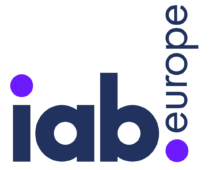Paul Cook, Tagman CEO, Discusses The Recent Forrester Report On Tag Management And How TagMan Addresses The Requirements For A TMS
by Ciaran O'Kane on 1st Jul 2011 in News


Forrester recently released its white paper on tag management, "How Tag Management Improves Web Intellegence". Here Paul Cook, CEO and founder of TagMan, discusses the report and how the company fits into the "nascent" tag management landscape.
Why do you think analysts like Forrester and Gartner are now turning their attention to Tag Management?
PC: I think they are acknowledging that the online marketing technology stack is broken and holding back the industry. Tagging has been a pain-point for many years and we are reaching a tipping point in terms of people recognizing this as an area they should be investing in. Before TagMan launched in 2007 people thought tagging was an insolvable problem. We showed how the problem could be solved and tags could become enabling rather than disabling and our growth rate speaks for itself.
How do you feel about Forrester’s Website tagging audit? Or do you think this is a valuable exercise for enterprise ecommerce companies?
PC: The audit is a great way to get people thinking about the problem. I think the scoring on load time question is a little high, anything over 10% for tags to me is too high. In terms of the overall score, Tag Management is really something for larger enterprises right now, although the audience is quite self-selecting as if you subscribe to Forrester you’re probably of a large enough scale to get good ROI.
Forrester sites a number of benefits to tag management including accuracy, efficiency, freedom, restoring ownership to measurement experts, stewardship, enhanced page load performance — did they miss anything? Or do you think some of these are more important than others?
PC: I’m an entrepreneur so freedom will always be important to me. I like to be able to work with every supplier and to be able to use urgency as part of my negotiation. We can implement / remove you tomorrow is a good bargaining chip. I also like to get the absolute most out of the products I invest in. That means getting them up and running quickly and tweaking them so they are just right. I hate waste, and what greater waste than the time invested in a failed Web analytics implementation let alone the six figure contract.
The key driver in the US market is undoubtedly performance. Latency is a bigger issue in the US due to the physical size of the country as much as anything else. Companies have made significant investments in accelerating their web servers but there has been little they can do about 3rd party assets until now. Sears recently took the tags off their website and found a significant increase in conversion rate by taking tags off that shouldn’t have been there but doing that can only take you so far. Accelerating tags will become the new must-have feature for a TMS.
Forrester bundled TagMan into something they called “the nascent tag management system landscape.” Do you agree with this characterization of your category?
PC: Well certainly, analysts understanding of the space is Nascent! But seriously, Europe and particularly UK is significantly ahead of the US in this area. For example we have 3 of the top 4 high street multi-retailers on TagMan whereas the equivalent companies here are still testing the water with limited Proof Of Concepts (POCs). Our business really took off once competitors entered the market, which helped clients to compare and contrast. We’ve seen a significant shortening of sales cycles in the US since Ensighten and BrightTag entered the market late last year.
Forrester points out that there is some risk in adopting a TMS because it “places an intermediate step between the web site and the tags, creating a potential point of failure.” How big a risk is this? Have you seen any instances when this has happened?
PC: I’d rather have a single point of failure than 20. That allows me to focus so I know where to be looking. Not wishing to tempt fate but TagMan has not failed since it launched 4 years ago. We have a lot of redundancy built into our architecture and our global scale has allowed us to add more layers to this.
There are two risks, one that tags aren’t delivered but second that the TMS fails to load entirely. Clearly neither is ideal but if a synchronous JavaScript call fails then that can hang the entire site. When we ran our Tag Management Survey last year around 30% of companies reported loss of site availability due to tags. We’ve now reached a point with our technology where we can completely remove this risk and we are unique in that regard.
The issue of tags not getting loaded is an interesting one. Most companies will offer an SLA in the 99%+ range so well within acceptable limits. The real problem is what latency will be added by the Tag Management System. Our 2008 study showed that traffic drops off a page at the rate of 1% per 100ms so loading the tags at the top versus the bottom can make a major difference. We generally find a couple of percent difference with our v2 product but our v3 product can typically improve data collection so watch this space for that announcement!
The report notes that some vendors are “analystic-focused while others are marketing focused” -- which focus does TagMan take and why do you believe that’s the smarter approach?
PC: I think this is more a reflection of where some of these products come from, essentially products spun out of web analytics professional services companies. This is something of a double-edged sword because it makes the other Ominiture shops wary about working with them. TagMan itself solves both challenges. Having different tag management systems for marketing and analytics makes no sense and the opportunity to resolve discreprencies, reduce the burden on IT are lost. We do both because we’re bigger and have been around longer, it’s normal for new competitors to position themselves as more niche but I wouldn’t want to pay 50% less for 20% of the functionality and it would seem a niche within a niche! My previous start-up was a high-end, tag heavy, web analytics platform so we know all about those challenges. We have over 180 different vendors running through TagMan today and there are numerous case studies including Omniture and Coremetrics. We’re committed to global leadership - that means support for any tag in every market.








Follow ExchangeWire